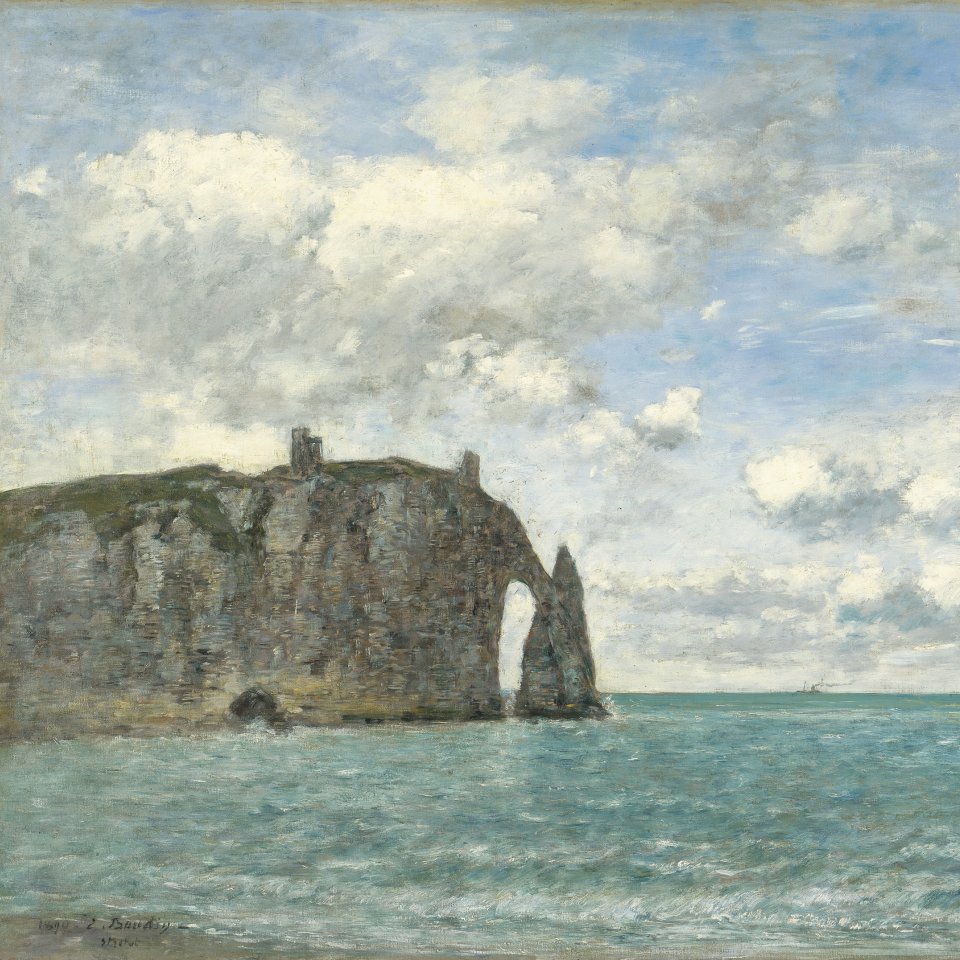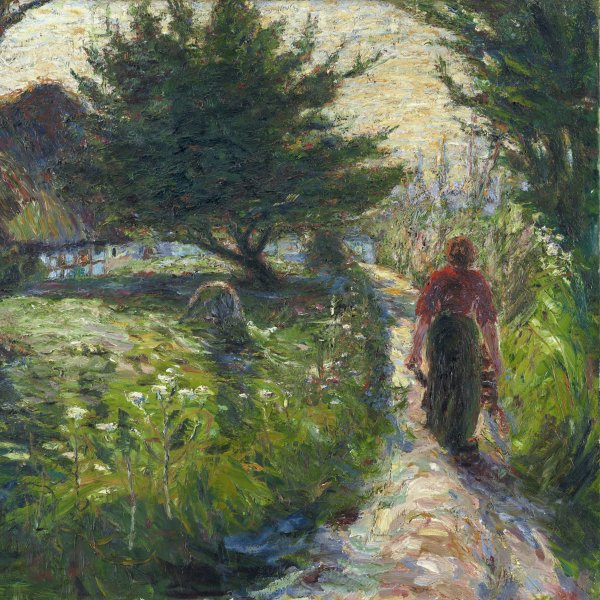Summer Clouds
Emil Nolde painted Summer Clouds in 1913, the year he departed for the faraway South Pacific islands accompanying the anthropological expedition of Kutz-Leber, which set out to study the peoples of New Guinea. During the journey across Russia, Siberia and Manchuria he made numerous notes and a few paintings.
To Nolde, an artist who always lived on the banks of the Baltic or close by, the sea was always a source of inspiration. He viewed its changing state as highly symbolic and he painted it on many occasions throughout his career. The present marine landscape, executed with vigorous, heavily laden brushstrokes in powerful colours, is dominated by menacing-looking clouds whose gradual darkening, which announces an intense storm over a wind-swept sea, heightens the tension of the work. In an article published in 1922, Professor Alfred Heuer wrote, “towards the upper edge of the painting, becoming bluer and bluer, streaming forth in all directions, unchecked, into infinity, embracing the whole world, producing an effect far exceeding the bounds of the picture: only sea and clouds and sky — the entire loneliness of Nordic seas... How prosaic Liebermann with his impressionistic seascapes seems by comparison. How differently Böcklin attempts to enliven his sea by means of legendary creatures, of which Nolde has no need. Only Hodler, conjuring up as if with divine hand the mountain summits of his native Switzerland, partakes of the same spirit as Nolde.”
Summer Clouds passed into the collections of the Kunsthalle in Kiel in 1921, until it was confiscated by the Nazi authorities in 1937. It was placed in storage in the Schloss Niederschönhausen, together with a large group of works branded as degenerate, until being sold by the German Government. It entered the Thyssen-Bornemisza collection in 1972.
Paloma Alarcó
Emotions through art
This artwork is part of a study we conducted to analyze people's emotional responses when observing 125 pieces from the museum.















